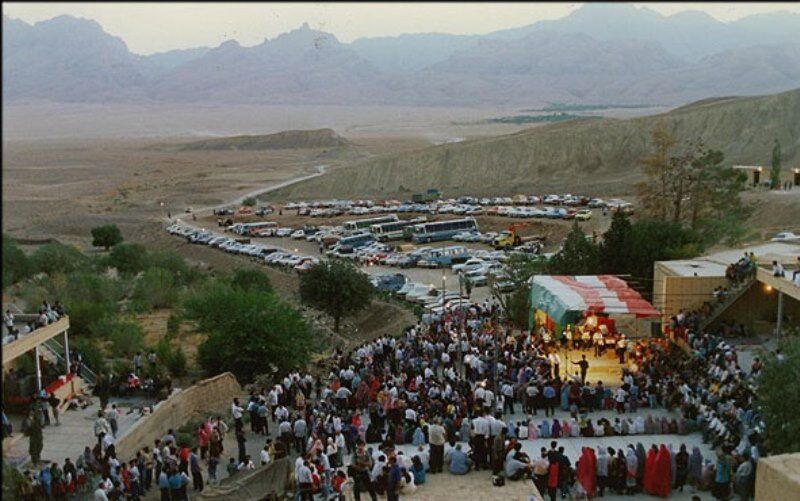The village of Chak Chak, also known as Pire Sabz, consists of a Zoroastrian Fire Temple perched beneath a towering cliff face in the desert of central Iran. It is located among the mountains of Ardakan and Anjireh on the way to Tabas, about 46 kilometers from Yazd.
Zoroastrians from all over the world come to Iran every year in a bid to say their prayers and carry out their rituals at this sacred place.
Like each sectarian and religious rituals, one needs to abide by certain rules before entering the place. First, you have to take off your shoes and put on a certain hat.
There are signs on the walls that remind the pilgrim that they should cleanse themselves in order to enter. The same goes for Muslim women, especially when they are going through their period, barring them from entering mosques.
As you enter the temple, inside a cave, you can see an ancient plane tree in front.
The shrine enclosure is floored with marble and its walls are darkened by fires kept eternally burning in the sanctuary.
The temple has an altar in which there are three oil-burning lights with a container of oil right beside them.
Also, the walls are decorated by the pictures of grand Zoroastrian figures.
Meaning “drip-drip” in Persian, Chak Chak is where Nikbanu, second daughter of the Sassanid Emperor Yazdegerd III of Persia, was cornered by the enemy in 640 CE. Fearing capture Nikbanu prayed to Ahura Mazda (the God, in Zoroastrianism) to protect her from her enemies.
Notable features of Chak Chak include the ever dripping spring located at the mountain. Legend has it that these drops are tears of grief that the mountain sheds in remembrance of Nikbanu.
Hence, there are several pots on the floor that collect that water/tears that are later given to the pilgrims as blessed water.
In the cliffs below the shrine, there are several roofed pavilions constructed to accommodate pilgrims. All these complexes are paid for by Zoroastrians inside and outside Iran.
“According to historical and religious documents as well as oral history passed down from generation to generation, last Sassanid Emperor Yazdegerd III of Persia moved to settle his family in Yazd, that was safe from the turbulence. Hence, he ordered construction of a city with citadels, trenches, fences to protect his family. It’s possible that Yazd is named after Yazdgerd,” reads a sign on one of the temple’s walls.
Yazdgerd, a father of seven, has two sons named Hormozan and Ardeshir as well as five daughters called Shahrbanu, Parsbanu, Mehrbanu, Nikbanu and Nazbanu. His wife was Katayun and his maid was called Morvarid.
9218**2050
Follow us on Twitter @IrnaEnglish



Your Comment